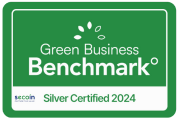Hỏi đáp
Dưới đây là một số câu hỏi thường gặp và câu trả lời tương ứng. Nếu như bạn có bất kì thắc mắc nào khác liên quan tới sản phẩm và dịch vụ của chúng tôi, hãy gửi câu hỏi của mình tới secoin@secoin.vn. Xin cảm ơn.
Yes, we can customize terrazzo as per customer’s requirements. Customizing terrazzo will require a sample cost.
Terrazzo will typically last the lifetime of any building structure, evident in buildings built over 100 years ago
Cracks in terrazzo can occur for a variety of reasons, most of which can be headed off by proper substrate treatment and honoring the joints in the concrete.
Yes, it can be recycled. Recycled terrazzo is a sustainable and environmentally friendly material made from a combination of recycled aggregates, such as marble or natural stone, and a binder composed of cement.
Terrazzo tiles are made by embedding marble, granite, and glass or quartz chips into a cement binder. These are all rigid materials and create a tile surface with unsurpassed durability. They will not chip or crack, and Terrazzo tiles will keep their good looks for many years, even in high-traffic areas with constant daily use. What’s more, if eventually, they begin to look a little worn, you can regrind and polish the surface to restore them to as-new condition.
Terrazzo is sustainable simply because of its production and installation process. Terrazzo tiles are produced using significantly less energy and generate less carbon footprint than other tiling solutions. Approximately 70% to 80% of a terrazzo tile consists of recycled and reclaimed materials.
Due to its natural composition, terrazzo does not contain any VOC or volatile organic compounds. VOCs are organic compounds that are vaporized by temperature changes and high vapor pressure. These substance emissions are a leading cause of air pollution in urban areas, thus, harmful to our environment.
Terrazzo consists of two main ingredients: Pieces of a durable material, or chips, and a binder to hold those chips in place. The chips can be any material that can withstand heavy traffic such as marble, granite, quartz, shells, or even glass. The binder consists of either a cement or resin based, dependent on where the terrazzo will be installed. Secoin terrazzo is made of cement binder that help this product can be used for both indoor and outdoor.
Modern-day terrazzo that we use today began its story around 500 years ago in Venice, Italy. Venetian artisans of the time began to take the discarded chips from marble slabs and imbed them into concrete mixtures. They would then grind down the surface for their own terraces and other living spaces – hence the term, “terrazzo” – which is the Italian term for “terrace”.





















